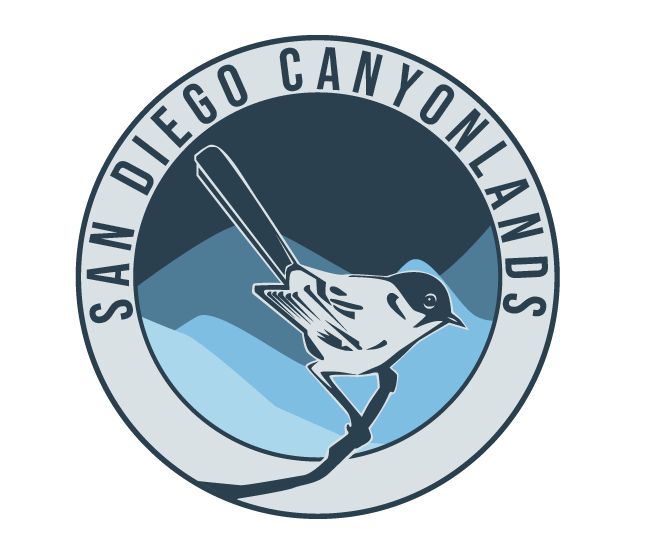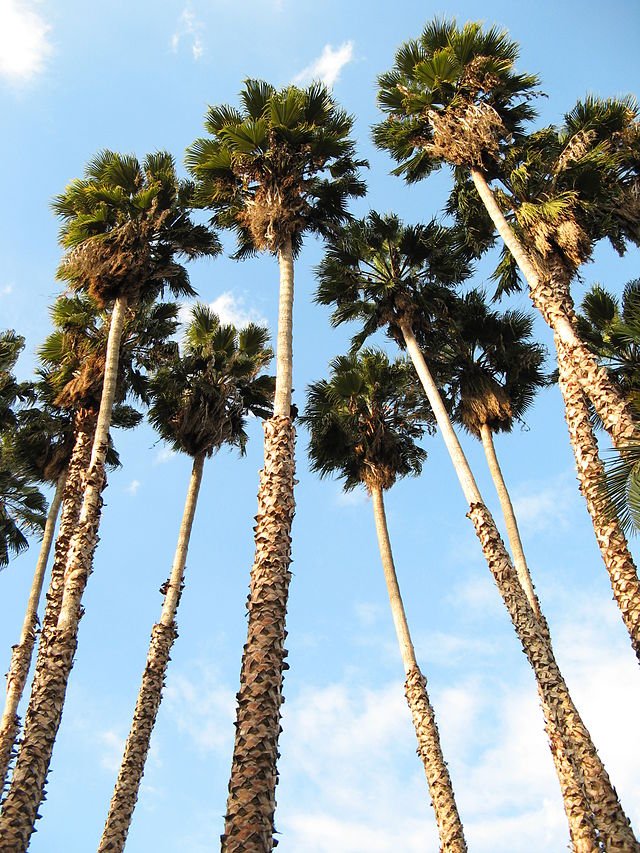Ah, palm trees. The quintessential tree of Southern California. They must be native to San Diego, right? Right...?!
Even though San Diego is known for its palm tree-lined streets, these plants are not native to our region. There is one known native palm tree to Southern California and that’s the desert fan palm (Washingtonia filifera) that is native to, you guessed it, the desert. Find out more information + a regional map of the species here. The palm trees that are most commonly found in our canyons are the Mexican fan palm (Washingtonia robusta) and the Canary Island date palm (Phoenix canariensis), and they are not native to San Diego.
These are the two most common palms that infiltrate our canyons. Because these plants are not indigenous and steal resources from the native flora and fauna, they are considered invasive. An invasive species is an organism not indigenous to an area that can cause ecological and economic harm. Palm trees are one of the most dangerous invasive species in our canyons because they can grow at an alarming rate and pose a major fire risk to the community.
Marcus Yam / Los Angeles Times
We are removing invasive palm trees to increase fire safety + restore native habitat
Currently, San Diego Canyonlands is working hard to remove this threat from Ruffin Canyon in Serra Mesa. Our Field Teams have been working to remove fire fuel in the brush management zone, prep the palms for removal, and restore the native habitat that has been affected by these invasive species. Since the beginning of September, our team has removed over 20,000 pounds (!!!) of palm fronds from the canyon.
Our team removing flammable palm fronds from Ruffin Canyon
We are excited to announce that we will be removing these major threats from our canyons this year. This is quite a large undertaking, and our team has been on the ground prepping for this project for the last several months. The first phase was to map all the palm trees that were within the City of San Diego Open Space in Ruffin Canyon. Next, our team had to prepare the palm trees for removal by removing the fronds from the base of the tree, hauling out all palm fronds and potential fire fuel, and creating habitat-friendly temporary trails to the palm trees for the arborists. Finally, we are ready for the palm removal to take place. We are working with West Coast Arborist, a family-owned tree management company, to do the felling of the palms. Once the palms are cut down, they will be hauled out by way of a helicopter.
Why helicopter? Lifting the palm trees via helicopter is the most efficient way of removing palm trees in a safe and timely manner. We do not want to build a road into the canyon to haul them out as this would cause degradation to the habitat.
Important Dates: The tree felling will begin on November 29th, and occur through December 18th. The final removal of the palm trees via helicopter will occur starting December 19th through December 23rd. For your safety, please do not enter Ruffin Canyon during these dates. If you have any questions regarding this project, please email info@sdcanyonlands.org.
PROMOTE, PROTECT, AND RESTORE
Once the palms are removed, our team will begin the habitat restoration process. We will be planting native plants to restore the streambed and habitat, and we hope the community will join us in this effort at our volunteer events. Because palm trees act like straws in the steam, we are expecting water to return to this canyon, a tributary to the San Diego River, which will aid in the restoration.







